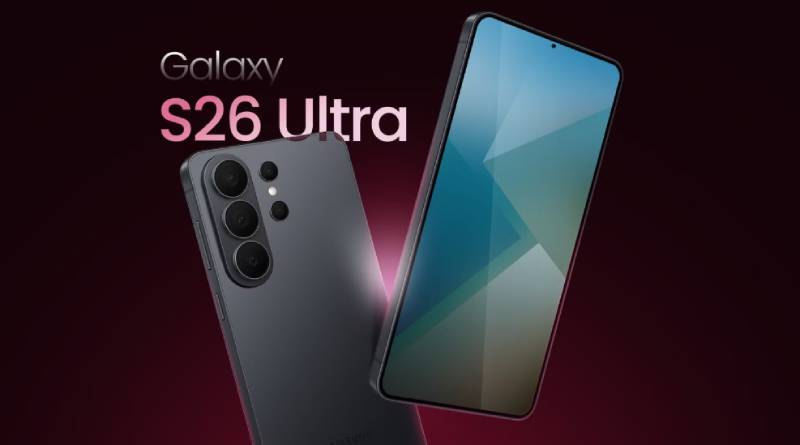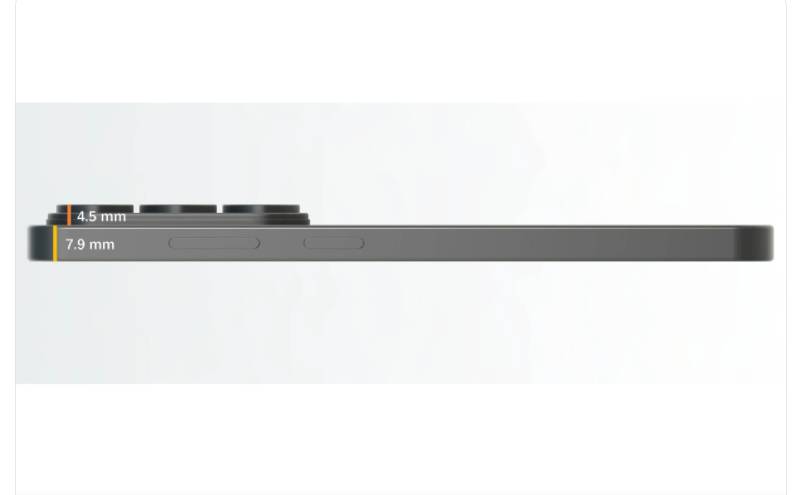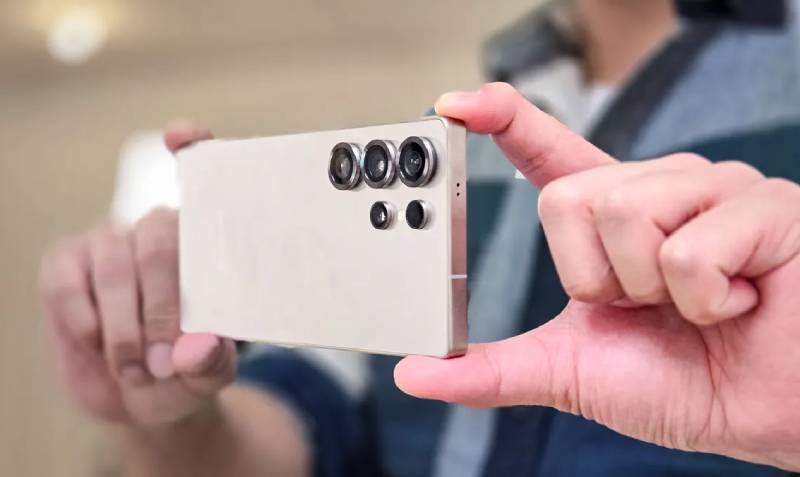As the flagship model in Samsung’s Galaxy S series, the Galaxy S26 Ultra has been the focus of much attention in the tech world long before its official release. With various rumors continuing to emerge, we’ve sorted through credible sources to provide a comprehensive overview of what we know so far about this highly anticipated device—covering release date, pricing, hardware upgrades, and more. For those in the mobile repair and accessories industry, we’ll also share insights into potential opportunities tied to the phone’s launch.

1. Release Date: A Possible Early Launch to Compete for Holiday Sales
Samsung’s Galaxy S series has a history of early-year launches, and the Galaxy S26 Ultra may continue this trend—with a twist. According to industry insiders and recent leaks, Samsung is considering moving the launch timeline forward by approximately one month compared to previous generations. The potential December announcement is widely seen as a strategic move: Samsung aims to capture a share of the holiday shopping season, traditionally dominated by Apple’s iPhones. However, a December launch also carries risks—supply chain pressures and limited time for pre-holiday inventory could impact sales. If the timeline stays on track, pre-orders may open in late December 2025, with official availability in early January 2026.
2. Pricing: Stable at the High End, with Familiar Promotions
The Galaxy S Ultra series has long positioned itself in the premium smartphone segment, and the S26 Ultra is unlikely to break this pattern. Based on pricing trends for the S23–S25 Ultra, we anticipate no major price hikes for the S26 Ultra, as there are no rumors of hardware or features that would significantly drive up production costs. Samsung is also likely to offer its signature launch promotions, such as “enhanced trade-in credits” (extra discounts for trading in old devices) and “free storage upgrades” (e.g., 512GB models sold at 256GB prices for a limited time). Carriers like Verizon, T-Mobile, and AT&T may match or exceed these offers—for example, Verizon could offer up to $1,000 off with a new line activation, while AT&T might provide up to $1,300 off with a 3-year plan and eligible trade-in.
3. Hardware Upgrades: Cameras, Display, and Performance
3.1 Cameras: Larger Sensors and a Possible Return of Variable Aperture
The Galaxy S26 Ultra’s camera system is set for notable improvements. The main wide camera will retain a 200MP sensor but upgrade to a larger 1/1.1-inch Sony sensor (compared to the 1/1.3-inch sensor in the S25 Ultra). A bigger sensor captures more light, improving low-light performance and delivering more natural bokeh without relying on Portrait Mode.
The selfie camera is expected to remain a 12MP sensor, but with improved post-processing to avoid over-sharpening—building on the S25 Ultra’s “realistic soft detail” approach. Video capture, an area where Apple still leads, may see incremental improvements, though no major overhauls have been rumored.
3.2 Display: Brighter, More Efficient, and Privacy-Focused
The S26 Ultra will keep the 6.9-inch AMOLED screen (a sweet spot for power users) but boost peak brightness to 3,000 nits (up from 2,600 nits on the S25 Ultra). This will make the screen more visible in direct sunlight.
Two innovative display technologies are also in the mix:
- CoE OLED: Integrates a color filter layer into the OLED panel, reducing battery consumption without sacrificing vividness.
- Flex Magic Pixel: AI-controlled pixels adjust viewing angles to act as a “native privacy screen”—blocking side views without dimming brightness for the user. Early test builds of OneUI 8.5 (the S26 Ultra’s expected OS) include a “Privacy Display” toggle, supporting this rumor.
3.3 Performance: Snapdragon 8 Elite Gen 5 and Faster RAM
The S26 Ultra will be powered by Qualcomm’s latest flagship chip, the Snapdragon 8 Elite Gen 5 (rebranded under Qualcomm’s new naming scheme). Manufactured using a 3nm process (2nm is still in early stages with low yields), the chip is expected to reach clock speeds of up to 4.74 GHz, with 2 power cores and 6 efficiency cores for balanced performance.
The Adreno 840 GPU will deliver a rumored 30% speed boost over the S25 Ultra’s Adreno 830, making the S26 Ultra a strong choice for mobile gaming. RAM will upgrade to 1γ LPDDR5X (10.7 Gbps), 20% faster and more energy-efficient than the S25 Ultra’s 1-beta LPDDR5X (9.6 Gbps).

4. Design and Battery: Slimmer Body, Familiar S Pen, and Faster Charging
4.1 Design: Slimmer Profile and Raised Camera Module
The S26 Ultra will get a minor redesign: it will be 0.4mm slimmer than the S25 Ultra (though overall weight will remain similar) and feature a raised “camera island” (like the Galaxy S25 Edge). An orange color option will join traditional hues, targeting users drawn to the iPhone 17 Pro’s popular orange variant.
The selfie camera will retain a small punch-hole design—rumors of an under-display selfie camera have been dismissed. The S Pen silo will also stay, though Samsung has had to solve magnetic interference issues: the S26 Ultra will support full Qi2 wireless charging (with built-in magnets), so the S Pen’s Wacom digitizer has been modified to avoid conflicts.

4.2 Battery: 5,000 mAh Cell with Faster Wired Charging
Samsung will stick with a 5,000 mAh battery (a safe choice post-Galaxy Note 7) but make it slightly smaller to fit the slimmer body. Charging speed will upgrade from 45W to 60W wired—modest progress, but a welcome improvement over previous generations. Wireless charging will remain 15W, with full Qi2 compatibility for magnetic chargers.
5. Software: OneUI 8 Based on Android 16, 7 Years of Updates
The S26 Ultra will launch with OneUI 8, built on Android 16. While details about the OS are scarce, “more AI features” are a given—likely powered by Google’s Gemini, though Samsung has also been linked to a potential partnership with Perplexity (a rising AI firm). Samsung’s proprietary apps (e.g., Camera, Gallery, Phone dialer) will get minor tweaks, and the Play Store alternative (Samsung App Store) will remain an option for users.
6. Implications for the Mobile Repair and Accessories Industry
For businesses in mobile repair and accessories, the S26 Ultra’s launch presents clear opportunities:
- Replacement Parts: The raised camera island and slimmer battery mean demand for camera module replacements and battery repair kits will rise. The new CoE OLED display (with integrated color filters) will require specialized repair tools—stocking these tools early can give repair shops a competitive edge.
- Accessories: Full Qi2 compatibility will drive demand for magnetic wireless chargers; the 60W wired charging upgrade means 60W-certified cables and chargers will be must-haves. The orange color option will create opportunities for matching cases, screen protectors, and skins.
- Pre-Launch Preparation: Repair shops should train technicians on the S26 Ultra’s new hardware (e.g., M14 OLED display, modified S Pen digitizer) by late 2025. Accessories retailers can partner with distributors to stock Qi2 chargers and orange-themed products ahead of the January 2026 release, capitalizing on launch-day demand.

Conclusion
The Samsung Galaxy S26 Ultra is shaping up to be a polished upgrade—focused on incremental improvements to camera performance, display efficiency, and charging speed, rather than radical overhauls. For consumers, it’s a strong choice if they own an S23/S24 Ultra and can wait until early 2026; for those needing a phone now, the S25 Ultra remains excellent.
For the repair and accessories industry, the key is to prepare early: anticipate demand for Qi2 chargers, specialized repair tools, and color-matched accessories, and align inventory with the rumored December 2025 announcement. As always, we’ll update this overview as more official details emerge—stay tuned!
